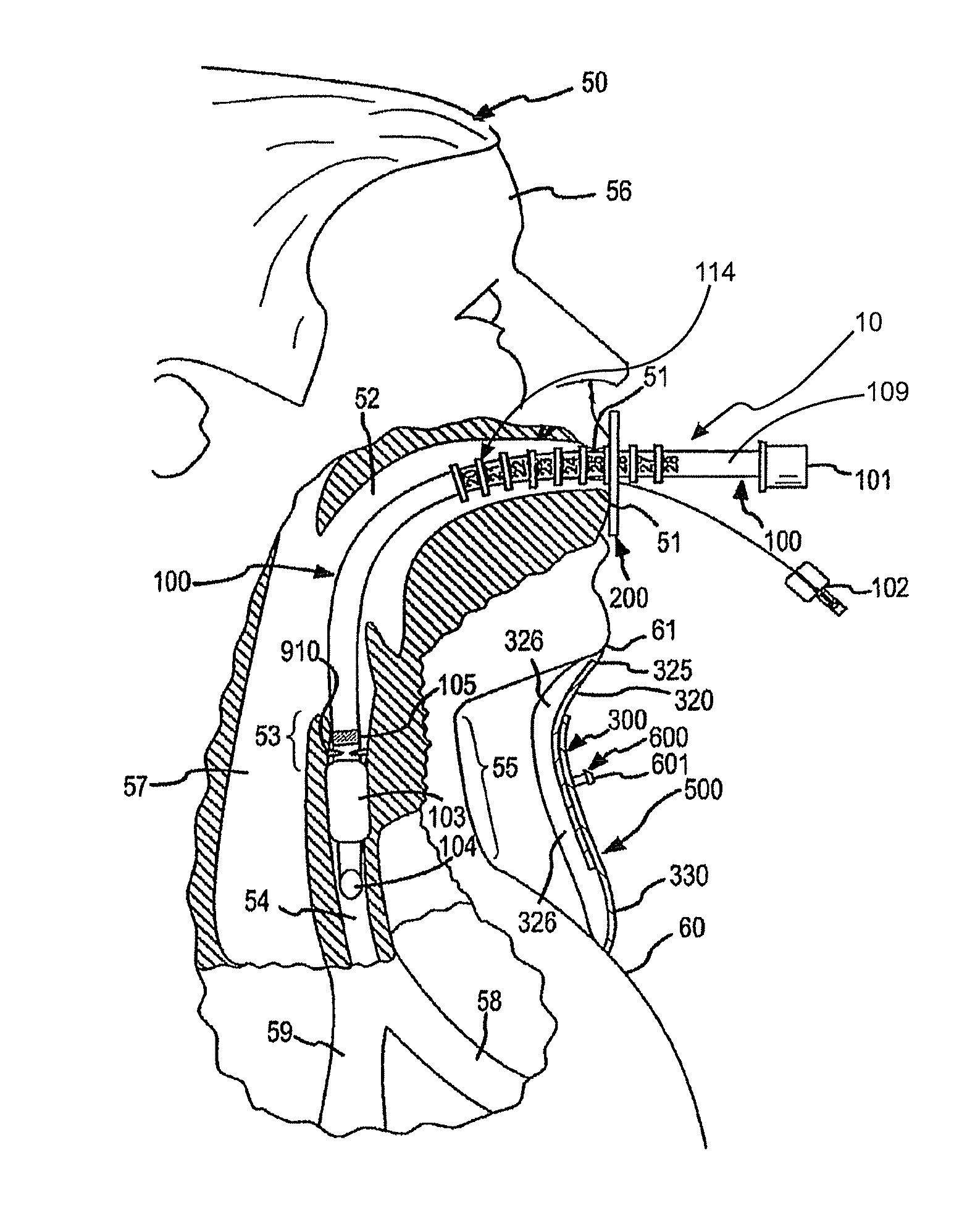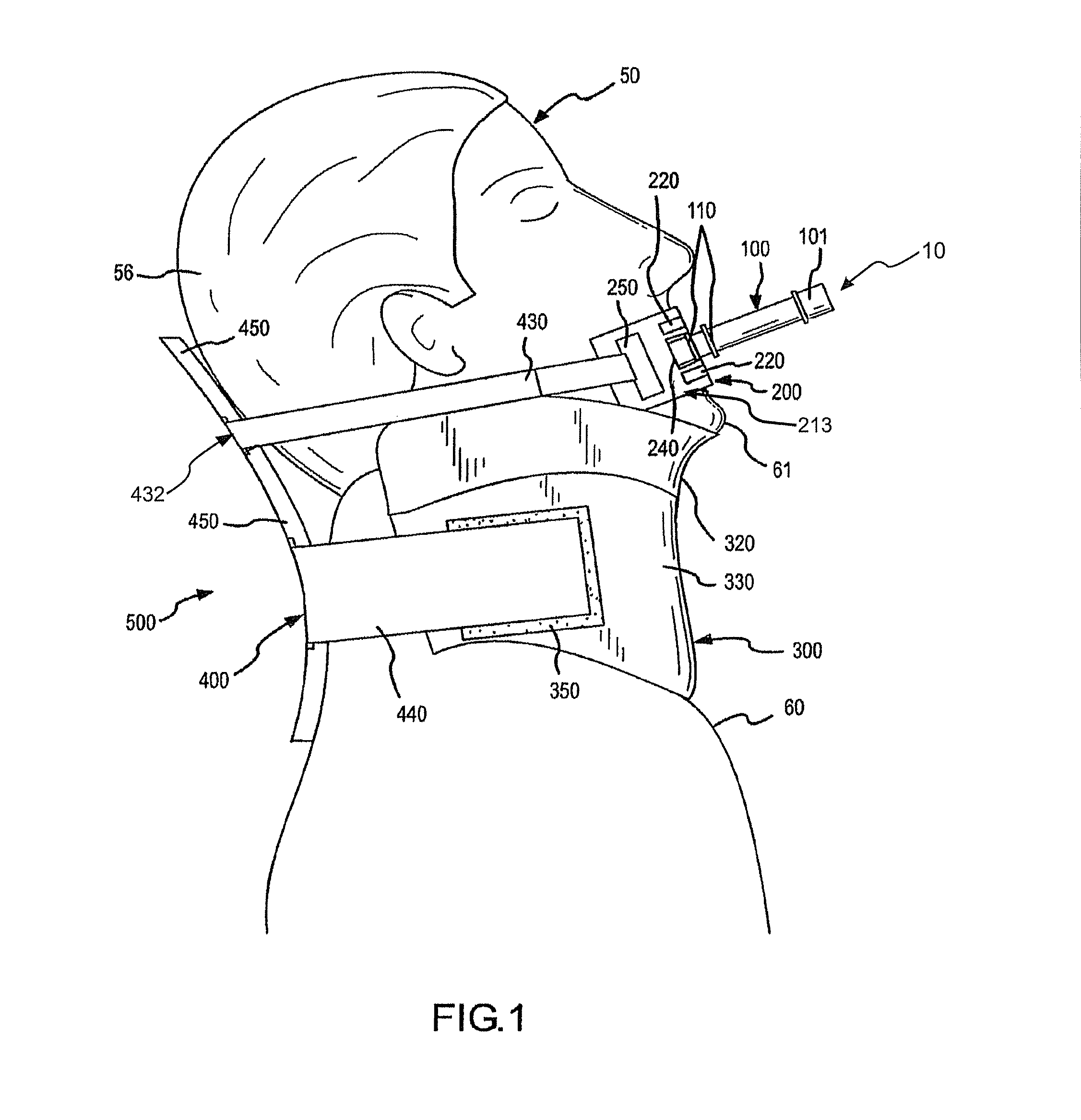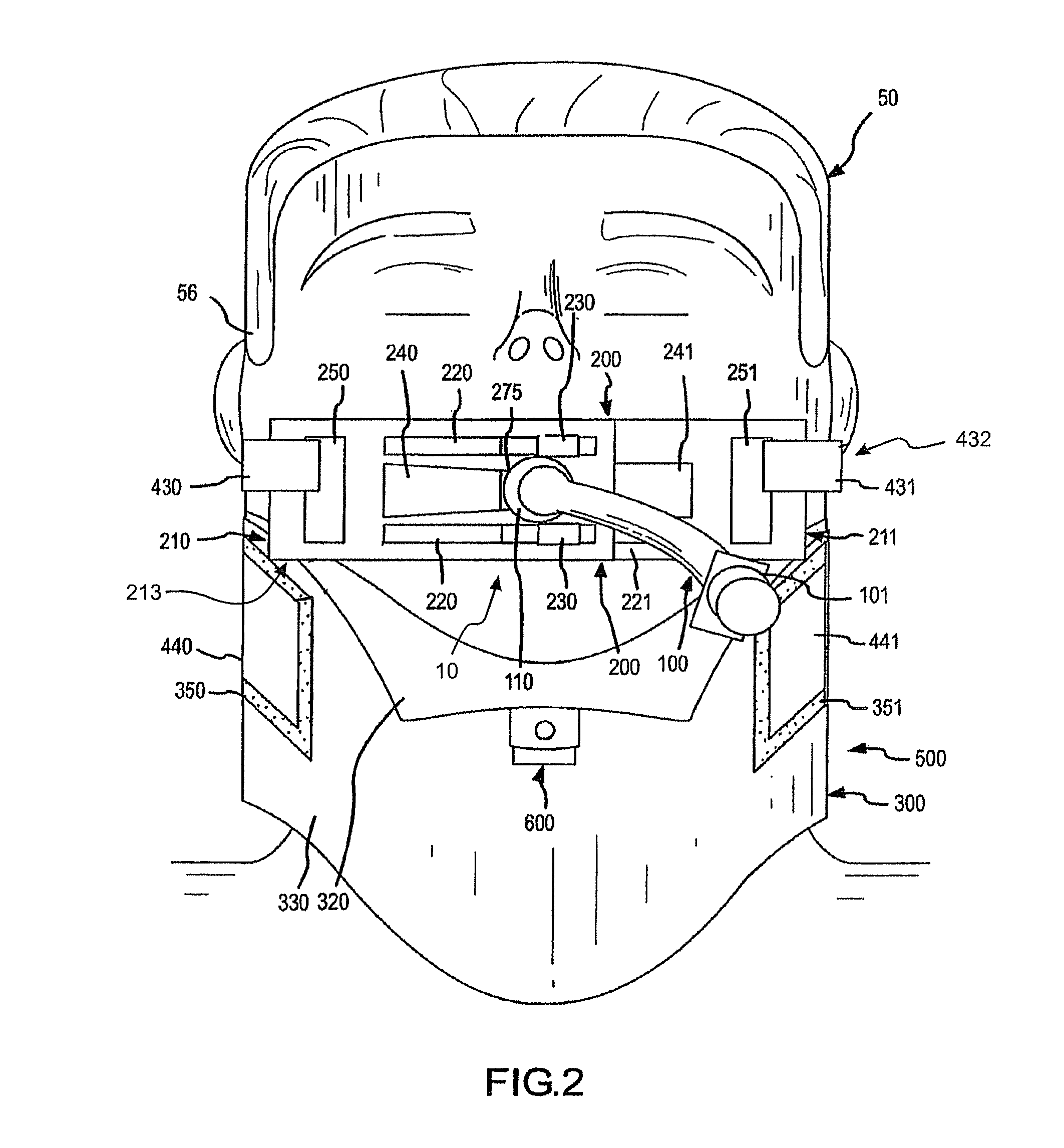Complete airway stabilization system and method
a complete airway and stabilization technology, applied in the field of endotracheal intubation, can solve the problems of inadvertent unintentional movement, and multiple severe pulmonary difficulties, and achieve the effect of preventing unintentional head movement and preventing malpositioning of the endotracheal tub
- Summary
- Abstract
- Description
- Claims
- Application Information
AI Technical Summary
Benefits of technology
Problems solved by technology
Method used
Image
Examples
Embodiment Construction
[0040]A complete airway stabilization system 10 comprises which incorporates the present invention is shown in FIGS. 1, 2 and 3. The complete airway stabilization system is used to intubate a patient 50 under conditions where natural respiration is impossible or severely compromised. The airway stabilization system 10 establishes an air passageway to the lungs for respiration of the patient 50, while eliminating many of the risks and difficulties associated with intubation with an endotracheal tube.
[0041]The airway stabilization system 10 an endotracheal tube 100, a faceplate 200 and a stabilization collar 500. The endotracheal tube 100 is inserted through the mouth 51, throat 52 and larynx 53 of the patient 50 (FIG. 3), and into the trachea 54 by using conventional intubation procedures. The faceplate 200 fits over the patient's mouth 51 and interacts with the endotracheal tube 100 to restrain the endotracheal tube 100 relative to the faceplate 200. The stabilization collar 500 fit...
PUM
 Login to View More
Login to View More Abstract
Description
Claims
Application Information
 Login to View More
Login to View More - R&D
- Intellectual Property
- Life Sciences
- Materials
- Tech Scout
- Unparalleled Data Quality
- Higher Quality Content
- 60% Fewer Hallucinations
Browse by: Latest US Patents, China's latest patents, Technical Efficacy Thesaurus, Application Domain, Technology Topic, Popular Technical Reports.
© 2025 PatSnap. All rights reserved.Legal|Privacy policy|Modern Slavery Act Transparency Statement|Sitemap|About US| Contact US: help@patsnap.com



